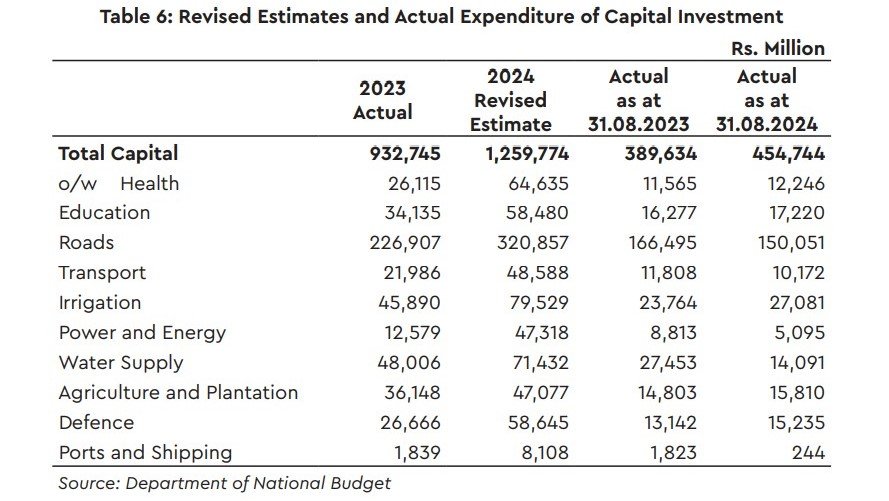
ECONOMYNEXT – Sri Lanka’s state spending is running sharply below budget, official data show, with the central bank also providing exceptional monetary stability bringing prices down absolutely.
Recurrent expenditure grew only 4.4 percent to 2,042 billion rupees by August 2024, against a 14.5 percent budgeted number, with non-interest expenditure rising 4.6 percent, compared to a budgeted 8.7 percent.
Salaries and wages were up 6.7 percent, against a budgeted 12.5 percent.
However more taxes collected from the people will have to be spent on state salaries in the future, due to slashing of spending power in the 2022 currency collapse.
Spending on goods and services were up 8.2 percent against a budgeted 13.7 percent and subsidies and transfers were up 1.5 percent against a budgeted 3.9 percent.
Sri Lankas central bank has provided exceptional monetary stability in 2024, allowing the currency to appreciate amid deflationary open market operations.
Salaries and wages took up 660 billion rupees out of the taxes collected from the people and subsidies are transfers 624 billion rupees.
Interest expenditure was contained at 1,560 billion rupees, up 2.2 percent, against budget rise of 20.9 percent.
Nominal interest rates are also a function of central bank monetary policy.
Reserve collecting central banks that do not cut rates with inflationary open market operations (printing money to enforce rate cuts) triggering forex shortages, eventually take countries towards very low interest rates comparable to those with clean floats.
Central banks that cut rates claiming inflation was low based on historical 12-months statistics (flexible inflation targeting), and enforce them with inflationary open market operations trigger currency depreciation, and currency crises.
Steep rates hikes are then required to save the domestic currency (the central bank’s monopoly note issue) triggering a ‘stabilization crisis’, where the economy contracts and nominal interest rates rise, expanding deficits and the debt to gross domestic product ratio.
Sri Lanka’s economy has now started to expand with the central bank providing monetary stability since the last quarter of 2022.
Sri Lanka’s overall budget deficit fell 38 percent, with revenues outpacing expenditure, growing 41 percent amid higher tax rates and a recovering economy.
Related
Sri Lanka budget deficit down 38-pct, tax revenues up 41-pct to August
There have been calls to cut income tax rates and also some value added tax.
Sri Lanka however has high import taxes on food to give profits to landowners, dairy company, tinned fish producers, a state enterprise producing sugar, a rice collecting lobby and maize producing and collecting lobby (so-called mafias), pushing up food prices, particularly proteins.
The only lasting way to reduce taxes is however to bring the spending to GDP down, analysts say.
It is usually not possible to bring down state spending, unless macro-economists are restrained from generating inflation (price pressure) in failed bids to boost demand and growth (full employment policies/potential output), critics say. (Colombo/Oct17/2024)
